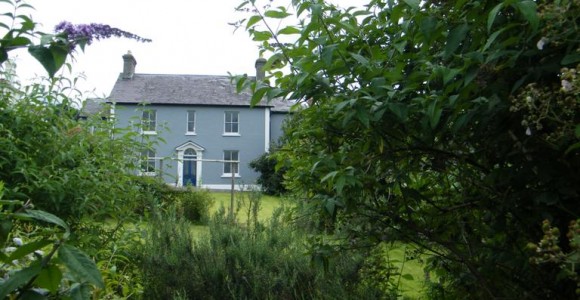What is the Local List?
A Local List is an inventory of all the heritage assets, including buildings, archaeological sites, monuments, places where significant local historical events may have taken place and open spaces that do not appear on any national lists or registers, but which are important to local communities and to the places that we live in. Local heritage plays a very important role in our day to day lives, contributing to our quality of life, our identity and our sense of place and community. The Local List helps to celebrate local
heritage, highlighting its importance and ensuring that it is valued. It allows local communities to formally identify the heritage assets that hold significance for them, that they value and that they want to see protected and preserved. The Local List represents the heritage that the local community holds dear but that does not conform to the criteria for national designation.
Who produces a local list?
Local Lists are produced by for local authorities and local communities working in partnership to identify and formally recognise locally important heritage assets.
Why produce a local list?
Producing a Local List gives a voice to local communities, helping to formally identify and recognise the heritage assets that are important to the local area and its people.
Local Lists celebrate local heritage and ensure that it is appreciated and valued.
Local Lists ensure that we recognise that there is more to our heritage than merely nationally important and designated Listed Buildings, Scheduled Ancient Monuments, Conservation Areas and Registered Parks
and Gardens.
The Local List can confer protection on many elements of the historic environment that would otherwise have no formal recognition or
protection, by reinforcing local character and distinctiveness and ensuring
that change and development respects the special qualities of an area and the heritage assets valued by local communities.
Local Lists ensure that the value of our heritage assets extends beyond the planning process and that heritage has its rightful place at the heart of what makes our communities interesting and pleasant places to live.
Being on a local list does not confer any statutory protection, but it does encourage the owner of a site or building, and the local community, to preserve its special qualities and help to ensure its long term survival.
How is a heritage asset included on the local list?
Local communities will be consulted on what heritage assets are included on the Local List for their area, and local people can nominate heritage assets that they would like to be included on the List. A heritage asset can only be included on the Local List if it meets any of the agreed criteria. These are:
1. Historic Interest
a) Does this relate to an important aspect of local social,
religious, political, or economic history?
b) Is it historically associated with an important local
feature?
2. Historic Association
a) Is it closely associated with: famous local people, local
history events, strong community or social developments (must be well
documented)?
b) Does it relate closely to any statutory protected
structure or site?
3. Architectural & Design merit
a) Is the surviving building/structure/park or garden the
work of a particular architect or designer which illustrates local or regional
history or design?
b) Does it show qualities of age, style or distinctive
characteristics relative to the area?
c) Does the architectural design, details and construction
materials add to the local character of the area?
4. Survival
a) Does it remain in a substantial and recognisable form?
b) Does it retain its historic features and layouts?
c) Does it represent an important element in the development
of the area?
5. Townscape merit
a) Does it represent an important visual amenity locally?
For instance does it create interesting visual impact in an area or make a
landmark?
b) Is it a notable building (s) on an important route into
the area, which creates a vista or contributes to the skyline? Does it
emphasise corner sites or provide focal points in the townscape?
6. Biodiversity
a) Buildings that provide habitat/protection and encourage
bio-diversity.
Brecon Beacon National Park’s Local Lists
The Bannau Brycheiniog National Park Authority have approved the Brecon and Talgarth Local List along with the Hay on Wye Local List.
You can view the approved Local List for Brecon and Talgarth here.
You can view the approved Local List for Hay on Wye here.
The Bannau Brycheiniog National Park Authority is currently in the early stages of preparing the initial drafts of the Local List for Crickhowell. After the initial draft has been produced local communities will be able to comment on this draft and nominate additional heritage assets that they would like to see included in their Local List. Once complete all the Local Lists produced for the Bannau Brycheiniog National Park will be publicly available.
What is the effect of local listing?
Although there are no direct additional statutory controls over properties that are included on the Local List the Authority will encourage owners to preserve the special qualities that have resulted in their inclusion and will promote restoration where there is good evidence.
Under the present Local Development Plan the protection of Cultural Heritage is covered by Policy 18.
